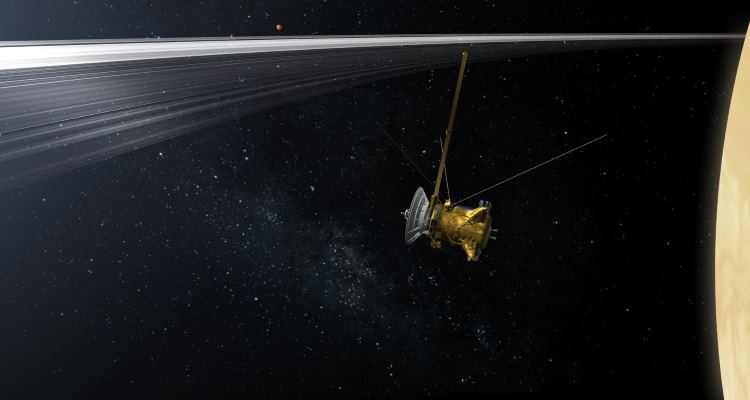Cassini discovered Saturn’s ring consisting of fragments of a former gas giant satellite

The Cassini space station continues to send to Earth photographs of the surrounding space, planets and their satellites. Scientists carefully study these photos, analyze them and draw certain conclusions. Now with the help of Cassini it was possible to discover, according to scientists, the youngest ring of Saturn. Probably, it consists of the remnants of a gas giant satellite decayed by the gravitational field of the planet.
The ring, as scientists have discovered, consists of fairly large ice blocks. The data that scientists analyzed was obtained by the station in August 2009 - then Cassini was at the equinox, which made it possible to observe the rings, studying the structure.
Scientists were able to determine the temperature in ring A (one of the middle rings of the giant planet), which, in turn, allowed us to determine the average size of the particles that make up this ring. As it turned out after all the necessary calculations, this ring consists of ice blocks, the size of which is about a meter. These are quite large objects - other rings of Saturn are made up of particles much smaller. Large objects that are part of the rings break up into smaller ones over time, however, it takes tens of millions of years.
Cassini mission experts determined that about 100 million years ago, instead of the ring that was now studied, there was a satellite near Saturn that collapsed over time. In 2016, the Cassini station should fly near the gas giant, which will clarify the situation.
Cassini-Huygens (Cassini – Huygens) is an automatic spacecraft (AMS), created jointly by NASA, the European Space Agency and the Italian Space Agency. Cassini-Huygens is designed to explore the planet Saturn, its rings and moons. The complex consists of the Cassini orbital station and the descent vehicle with the Huygens automatic station, intended for landing on Titan.
Cassini-Huygens was launched on October 15, 1997. July 1, 2004 after braking, entered the orbit of the satellite of Saturn. On December 25 of the same year, the descent vehicle separated from the orbital station and on January 14, 2005 entered the atmosphere of Titan, providing a soft landing of the automatic station on its surface. The mission was originally planned until 2008, but subsequently extended until the summer of 2010. On February 3, 2010, a further extension of the program to 2017 was announced .
